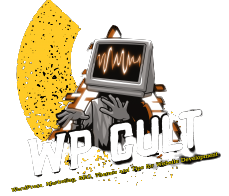Link-Building
Advanced Strategies to Build Powerful EDU Backlinks
This article provides a comprehensive guide to building EDU backlinks, which are highly valuable for SEO due to their high authority and trustworthiness. The article outlines eight effective strategies for EDU backlink building, including getting listed on resource pages, offering discounts to staff and students, creating scholarships for students, interviewing prominent faculty members, mentioning EDU bloggers in your content, creating a careers/jobs page, leveraging broken link building, and engaging with alumni associations. The article also emphasizes the importance of diversifying your educational sources, being patient, building your brand and authority, and maintaining a varied link profile.

Securing a backlink from an accredited educational institution (EDU) is a challenging but rewarding endeavor in the realm of digital marketing. Known for their high authority and trustworthiness, EDU backlinks can significantly enhance your website’s Google rankings. This guide will delve into eight innovative strategies to build EDU backlinks effectively.
What Are EDU Backlinks?
EDU backlinks are hyperlinks from websites with the .edu extension, denoting education. These domains are tightly regulated and only granted to legitimate educational providers, making links from these sources highly valued by Google.
The Value of EDU Backlinks
- High Authority and Reputation: Educational institutions with EDU domains typically have robust backlink profiles and high domain authority due to their longevity and the quality of content they produce.
- Natural Link Attraction: These sites often garner organic backlinks from other reputable sources due to the valuable content they offer, such as research papers, academic achievements, and technological breakthroughs.
- Authenticity: EDU backlinks are usually not products of link schemes, requiring genuine effort to secure a link.
- Trust and Authority: Links from EDU domains carry significant weight in Google’s eyes, enhancing your site’s perceived trustworthiness and authority.
PRO TIP: Before starting a link-building campaign, assess the backlinks needed to improve your rankings.
8 Effective Strategies for EDU Backlink Building
- Get Listed on Resource Pages: Many educational institutions host resource pages covering various topics. Find relevant organizations and pitch valuable content to get featured on these pages. Use Google searches like site:.edu + niche keyword + inurl:resource to identify these opportunities.
- Offer Discounts to Staff & Students: Providing exclusive discounts can lead to backlinks from dedicated discount pages on EDU sites. This strategy not only garners backlinks but can also drive sales.
- Create Scholarships for Students: Offering scholarships is a high-investment but impactful way to earn backlinks from scholarship pages on educational websites. This approach also contributes positively to the community.
- Interview Prominent Faculty Members: Interviewing faculty members for interviews or opinions can lead to backlinks from their personal or institutional blogs. Find these opportunities using specific Google searches and reach out for their insights.
- Mention EDU Bloggers in Your Content: Acknowledging the work of EDU bloggers in your content can lead to reciprocal links. Identify these bloggers, mention them in your posts, and inform them about it.
- Create a Careers/Jobs Page: Educational institutions might link to your careers page if you offer relevant job opportunities. This strategy can attract multiple backlinks and is beneficial if you have numerous job openings or internship opportunities.
- Leverage Broken Link Building: Identify broken links on EDU sites and offer your content as a replacement. Tools like Ahrefs are instrumental in finding such opportunities efficiently.
- Engage with Alumni Associations: If you’re an alumnus of an institution, you can leverage your achievements to get featured on their alumni pages. Develop newsworthy content about your accomplishments and reach out to your alma mater.
Important Considerations in EDU Backlink Building
- Diverse Educational Sources: Opportunities for EDU backlinks extend beyond Ivy League colleges to various educational institutions like community colleges, art institutes, and seminaries.
- Effort and Patience: Building EDU backlinks requires special skills, patience, and practice, making it challenging but rewarding.
- Brand and Authority Building: Focus on developing your site’s brand and authority before pursuing EDU backlinks, as educational organizations prefer linking to trusted sites.
- No Ranking Guarantees: While EDU backlinks are valuable, they don’t guarantee top Google rankings. They should be part of a consistent and diversified SEO strategy.
- Varied Link Profile: Aim for a diverse link profile with links from various relevant websites, not just EDU domains.
In summary, while building EDU backlinks is demanding, it’s a formidable strategy for elevating your website’s authority and search engine rankings. Select a couple of the above tactics and diligently work on them to distinguish your efforts from the competition. Consider contacting professional link-building services like LinksThatRank for additional assistance in high-authority link-building.
SEO
45X Ways to Skyrocket Your Search Traffic
This Traffic guide offers 45 strategies to boost search traffic, focusing on technical SEO, content, and link building. It advises on key aspects like using Google’s tools for tracking website performance and identifying errors, optimizing for mobile, fixing broken links, incorporating keywords, and creating engaging content. It also encourages strategic link building through guest blogging, social media promotion, and producing infographics. By following these tactics, you can expect improved website visibility and higher organic traffic.

Traffic Guide
Looking to boost your search traffic this year? You’re in the right place. This guide uncovers 45 dynamic strategies to elevate your SEO game.
SEO isn’t rocket science; it’s about mastering three core areas:
- Technical SEO
- Content
- Link Building
Let’s dive into how to excel in each area this year.
Download My Exclusive SEO Tool Now
And discover four innovative ways to increase search traffic without relying on backlinks.
How To Use My SEO Checklist
Think of SEO as constructing a robust building. Start with a solid foundation (technical SEO) and then layer on content and link-building strategies. Follow this checklist from top to bottom for the best results.
SEO Basics Checklist
1. Set Up Google Search Console
- Essential for tracking website performance and insights into Google’s view of your site.
- Identify errors, track SERP performance, view traffic-driving keywords, and more.
2. Install Bing Webmaster Tools
- Optimize for Bing’s growing user base and its unique search engine market share.
- Monitor Bing rankings and optimize accordingly.
3. Set Up Google Analytics
- Understand your audience deeply with this powerful tool.
- Analyze leads, conversions, traffic sources, and more.
4. Install An SEO Plugin
- For WordPress users, Rank Math or Yoast SEO is indispensable.
- Rank Math leads with features and user-friendliness.
5. Create & Submit A Sitemap
- Direct Google to all your website pages for optimal indexing.
- Use Google Search Console for sitemap submission.
6. Generate A Robots.txt File
- Control what search engines index.
- Use Rank Math for easy robots.txt generation.

Technical SEO Checklist
7. EAT Signals
- It is crucial for trust and authority, especially for YMYL content.
- Showcase expertise, authority, and trustworthiness throughout your site.
8. Mobile-Friendly Site
- Essential since Google’s mobile-first indexing.
- Use Google’s mobile-friendly test tool for evaluation.
9. Site Speed
- A critical ranking factor after Google’s page experience update.
- Utilize Google’s Page Experience report for insights.
10. Crawling Errors
- Fix them with tools like Semrush and Ahrefs for better indexing.
11. Indexing Errors
- Identify and resolve them via Google Search Console.
- Ensure key website parts are indexed for optimal SERP performance.
12. Use HTTPS
- Secure your site for better ranking and user data protection.
- Check SSL certificate quality with the SSL Labs test.
13. Eliminate Duplicate Content
- Use canonical tags and no index tags to manage duplicate content.
14. Canonical Tags
- Prevent duplicate content issues, especially for home pages.
15. Broken Links
- Fix them for better user experience and SEO health.
16. Structured Data
- Implement schema markup for rich SERP results.
- Utilize Rank Math for easy schema implementation.
17. Fix Orphaned Pages
- Identify and link them for better indexing and navigation.

Keyword Research Checklist
18. Build A Keyword Strategy
- Use intelligent tools and research to formulate a winning strategy.
19. Google Suggest For Long-Tail Keywords
- Utilize Soovle for efficient long-tail keyword discovery.
20. Google Keyword Planner
- Leverage Google’s tool for in-depth keyword insights.
21. Use AnswerThePublic
- Uncover question-based keywords relevant to your audience.
22. Forums & Communities
- Dive into Reddit and Quora for untapped keyword ideas.
Content Checklist
23. Steal Featured Snippets
- Analyze and replicate formats of existing featured snippets.
24. Engaging Questions
- Hook readers with thought-provoking questions.
25. Structured Content with Heading Tags
- Organize content for readability and SEO.
26. Short Sentences & Paragraphs
- Enhance readability and user engagement.
27. Clickable Table of Contents
- Improve navigation and potential for site links in SERPs.
28. Multimedia Usage
- Incorporate images, videos, and GIFs for engagement and ranking.
29. Schema Markup
- Enhance visibility with structured data on every page.
30. Content-Length
- Tailor the length for each piece based on niche and topic relevance.
31. Keep Content Updated
- Regularly refresh content to maintain rankings.

On-page SEO Checklist
32. Compelling Meta Descriptions
- Craft them as mini-advertisements for higher click-through rates.
33. Keyword in Title, URL, Tags
- Optimize these elements for improved search relevance.
34. Short URLs
- Keep URLs concise for better ranking potential.
35. Internal Links
- Use them strategically for site structure and SEO value.
36. Relevant External Links
- Link to high-authority, trustworthy resources.
37. Optimized Images
- Use descriptive names, alt text, and compression for SEO.
Link Building Checklist
38. Avoid Blacklisted Backlinks
- Use tools to check the quality of your backlinks.
39. Target Pages for Links
- Focus on pages with high commercial relevance.
40. Backlink Quantity Assessment
- Analyze competitors to determine the necessary link quantity.
41. Event Link Building
- Gain exposure and links through event sponsorships.
42. Testimonial Links
- Offer testimonials for high-authority homepage backlinks.
43. Podcast Appearances
- Use podcasts for brand exposure and quality links.
44. Crowdfunded Link Building
- Support startups for backlinks and recognition.
45. High-Quality Guest Posts
- Publish on authoritative sites for natural link acquisition.
45 Ways to Increase Your Search Traffic in 2023

In today’s competitive online landscape, having a strong search engine optimization (SEO) strategy is more important than ever. SEO can help you increase your website’s visibility in search engine results pages (SERPs), leading to more organic traffic and, ultimately, more sales.
This blog post will outline 45 ways to increase your search traffic in 2023. These tips are based on the latest SEO best practices and are designed to help you improve your website’s rankings and attract more visitors.
Technical SEO
Technical SEO is the foundation of a successful SEO strategy. It ensures that your website is technically sound and easy for search engines to crawl and index. Here are a few technical SEO checklist items to address:
- Set up Google Search Console: Google Search Console is a free tool that helps you track your website’s performance in the SERPs. It can also identify any technical errors preventing your website from ranking.
- Install Bing Webmaster Tools: Bing Webmaster Tools is similar to Google Search Console but specifically for the Bing search engine.
- Set up Google Analytics: Google Analytics is another free tool that helps you track your website traffic. It can provide valuable insights into your audience, such as their demographics, interests, and behavior.
- Install an SEO plugin: If you use WordPress, you must install an SEO plugin like Rank Math or Yoast SEO. These plugins can help you automate many of your technical SEO tasks.
- Create & submit a sitemap: A sitemap is an XML file that lists all your website’s pages. Submitting your sitemap to Google can help them index your website more quickly.
- Generate a robots.txt file: A robots.txt file tells search engines which pages on your website they should and shouldn’t crawl.
Content SEO

Once you’ve taken care of the technical aspects of your website, you can start to focus on creating high-quality content that will attract and engage visitors. Here are a few content SEO checklist items to address:
- Use EAT Signals: EAT stands for expertise, authority, and trustworthiness. Google is increasingly emphasizing EAT signals, so it’s essential to ensure that experts create your content and that your website is a trusted source of information.
- Make sure your site is mobile-friendly: Mobile-friendliness is a major ranking factor, so it’s important to ensure your website is easy to use on mobile devices.
- Ensure your site is fast: Website speed is another important ranking factor. Make sure that your website loads quickly and smoothly.
- Find & fix crawling errors: Crawling errors can prevent search engines from indexing your website. Use a tool like SEMrush or Ahrefs to identify and fix crawling errors.
- Find & fix indexing errors: Indexing errors can also prevent search engines from ranking your website. Use Google Search Console to identify and fix any indexing errors.
- Use HTTPS for more security: HTTPS is a known lightweight ranking factor. Make sure that your website is secure.
- Eliminate duplicate content: Duplicate content can confuse search engines and hurt rankings. Make sure that you have no duplicate content on your website.
- Check for canonical tags: Canonical tags help search engines avoid indexing duplicate content. Make sure that you have canonical tags on all of your pages.
- Fix all broken links: Broken links can hurt your user experience and rankings. Make sure that you fix all of your broken links.
- Add structured data: Structured data can help search engines understand your website content better. Use schema markup to add structured data to your website.
- Fix orphaned pages: Orphaned pages are pages on your website that aren’t linked to any other page. This can make it difficult for search engines to find them. Ensure you link to all of your pages from other pages on your website.
Good keyword research is the foundation of your SEO strategy. Here are a few keyword research checklist items to address:

- Build a keyword strategy: Before delving into the world of keyword research, it’s crucial to establish a well-defined strategy. This involves understanding your target audience, their search behavior, and the overall goals of your SEO campaign. Randomly selecting keywords without a strategic plan can lead to wasted effort and ineffective optimization.
- Use ‘Google Suggest’ to find long-tail keywords: Google Suggest, the drop-down menu that appears as you type your search query, is a treasure trove of long-tail keywords. These keywords are more specific and less competitive, making them ideal for niche websites or targeting specific audiences. You can uncover valuable keyword opportunities that align with your target audience’s search intent by analyzing Google Suggest.
- Find solid keywords with Google Keyword Planner: Google Keyword Planner, a free tool offered by Google Ads, is an invaluable resource for keyword research. It provides comprehensive data on search volume, competition, and related keywords, allowing you to make informed decisions about your keyword selection. By utilizing Google Keyword Planner, you can identify high-quality keywords relevant to your content and potentially drive organic traffic to your website.
- AnswerThePublic: Uncovering User Search IntentAnswerThePublic is a unique and powerful tool that helps uncover the questions and queries people are searching for. Analyzing search patterns and autocomplete data visualizes these search terms in a user-friendly format. AnswerThePublic provides valuable insights into your target audience’s language and phrasing, allowing you to tailor your content to match their search intent and improve your chances of appearing in relevant search results.
- Additional Keyword Research Considerations

- As you delve deeper into keyword research, consider these additional factors to enhance your strategy:
- Search Intent: Understand the intent behind user searches, whether informational, navigational, or transactional.Keyword Difficulty: Assess the level of competition for specific keywords, targeting those with a balance of search volume and achievable ranking potential.Keyword Relevance: Ensure that your chosen keywords align with your website’s content and target audience to attract relevant traffic.Keyword Frequency: Strategically incorporate keywords throughout your content, but avoid keyword stuffing, which can harm your website’s credibility.Keyword Updates: Regularly monitor and update your keyword list to reflect search trends and user behavior changes.
Link Building
Link building is another vital part of your SEO strategy. It involves getting other websites to link to your website. This helps improve your website’s authority and credibility, leading to higher rankings in the SERPs. Here are a few link-building checklist items to address:
- Guest blogging: Guest blogging is a great way to get backlinks to your website. It involves writing blog posts for other websites and including a link to your website in your author bio.
- Broken link building: Broken link building involves finding broken links on other websites and then contacting the website owner to inform them about the broken link. You can then offer to replace the broken link with a link to your website.
- Resource page link building: Resource pages are pages on other websites that list a collection of useful resources. You can contact the website owner to inform them about your website and ask them to include a link to it on their resource page.
- Social media promotion: Social media promotion can help you get more exposure for your website and attract more visitors. This can lead to more backlinks to your website.
- Infographic creation: Infographics are a great way to represent information visually. Creating infographics and then sharing them on social media can help you get more backlinks to your website.
Local SEO
You’ll need to optimize your website for local search if you have a local business. This involves ensuring that your website appears in the search results when people search for businesses in your area. Here are a few local SEO checklist items to address:
- Create a Google My Business listing: Google My Business is a free tool that helps you manage your business’s online presence. Make sure that you have a complete and accurate Google My Business listing.
- Get your business listed in local directories: You can get your business listed in several local directories. This can help you get more exposure for your business.
- Use local keywords: Make sure that you use local keywords throughout your website. This will help your website appear in the search results when people search for businesses in your area.
- Build citations: Citations mention your business name, address, and phone number (NAP) online. Building citations can help you improve your local rankings.
- Encourage customer reviews: Customer reviews can help you improve your local rankings. Encourage your customers to leave positive reviews of your business online.
Following these tips can improve your website’s search traffic and attract more visitors.

Backlinks
What are Backlinks and Why Do They Matter?
Backlinks are links from other websites pointing back to your site. They act like votes of confidence. The more quality sites link to you, the more trusted your content is in the eyes of Google. So, sites with more relevant backlinks tend to rank higher in search engines.
How Can I Get Backlinks?
There are a few common ways a website can earn backlinks:
- Create helpful, authoritative content that sites want to link to
- Reach out to relevant sites to contribute guest posts with a link back to your website
- Interact and engage with online communities like forums and let your expertise shine through
- Look for opportunities to sponsor niche events, resources, or podcasts that will feature your site
Start by cleaning up any issues that might deter backlinks, like broken pages or thin content. Then, build relationships, provide value for others, and watch new links trickle in over time!
What Makes a Good Backlink?
Focus on getting links from established sites closely related to your industry or topic. Avoid low-quality links from obscure, unrelated, or questionable sites, as these can hurt your rankings. Slowly build a diverse network of relevant, reputable backlinks over time. Quality over quantity is key!
Traffic
21 Effective Strategies to Amplify Website Traffic
The article provides a comprehensive guide to driving traffic to your website, highlighting 21 effective methods. These techniques include targeting low-competition SEO topics, gaining brand exposure via podcasts, conducting content gap analysis, engaging on Reddit, collaborating with complimentary brands, and continuously updating outdated content. Other strategies encompass utilizing social media, building personal brands, developing free tools, repurposing content, and exploring lesser-known ad platforms. The aim is to enhance site visibility, improve search engine rankings, and ultimately increase visitor traffic.

Navigating the myriad ways to drive traffic to your website can be daunting. However, not all strategies are created equal. This guide focuses on 21 proven methods that can significantly boost your site’s visibility and traffic.
1. Target Low-Competition SEO Topics
- Leverage tools like SemRush’s Keywords Explorer to uncover topics with low keyword difficulty but high search potential.
- Example: A post on evolving SEO trends continues to draw traffic due to strategic keyword targeting.
2. Brand Exposure via Podcasts
- Appear on relevant podcasts to tap into new audiences.
- Use Ahrefs’ Site Explorer to identify podcasts where industry influencers have appeared and pitch yourself as a guest.
3. Content Gap Analysis for Higher Rankings
- Analyze the top-ranking pages for common keywords and identify content gaps in your articles.
- Fill these gaps to enhance your content’s relevance and ranking potential.
4. Engage Reddit Communities with Value-Added Posts
- Share valuable content on Reddit without overt self-promotion to avoid backlash.
- Repurpose your top content for Reddit, keeping it informative and link-free until the end.
5. Collaborate with Complementary Brands
- Partner with non-competitive brands targeting similar audiences for webinars or content collaborations.
- Example: Joint webinars with social media tools like Buffer, targeting the same audience base.
6. Update Outdated Content
- Regularly refresh your high-performing content to maintain or improve its search engine ranking.
- Example: Updating an SEO tools article led to a significant traffic increase.
7. Connect with Industry Amplifiers
- Identify and engage with influencers in your niche using tools like SparkToro.
- Build relationships rather than seeking immediate promotion.
8. Maximize Reach with Social Media Threads
- Convert blog posts into engaging social media threads, particularly on platforms like LinkedIn and Twitter.
- Example: Turning an AI content article into a popular LinkedIn thread.
9. Utilize FAQ Sections for Long-Tail Keywords
- Add FAQ sections to your content to rank for related long-tail queries.
- Research common questions using tools like Ahrefs’ Keywords Explorer.
10. Build a Personal Brand on LinkedIn
- Regularly post and engage on LinkedIn to tap into its vast professional network.
- Leverage influencers and relevant connections to enhance your content’s reach.
11. Engage TikTok’s Vast Audience
- Create consistent TikTok content to tap into its billion-user base.
- Example: A strategy involving multiple daily videos for initial weeks to establish a presence.
12. Develop Free Tools for ‘Tool’ Keywords
- Create useful, free tools related to high-demand keywords.
- Example: Ahrefs’ suite of free SEO tools driving substantial monthly search visits.
13. Repurpose Content Across Channels
- Transform your content to suit different platforms, like turning videos into blog posts or social media content.
- Example: Adapting a YouTube video into a detailed blog article.
14. Boost Rankings with Strategic Internal Linking
- Utilize internal links effectively to pass PageRank and improve page rankings.
- Identify internal linking opportunities using tools like Ahrefs Webmaster Tools.
15. Gain Traction on Product Hunt
- Launch products or significant updates on Product Hunt to reach a tech-savvy audience.
- Build a following and engage in relevant communities for a successful launch.
16. Feature in Niche-Relevant Newsletters
- Get your content featured in popular industry newsletters to reach targeted audiences.
- Utilize platforms like Paved or Reletter to find relevant newsletters.
17. Optimize Google Business Profile for Local Queries
- Claim and optimize your Google Business Profile to appear in local searches and Google’s “map pack.
- Regularly update your profile with accurate and detailed information.
18. Engage Audiences with a Weekly Newsletter
- Create a weekly newsletter featuring curated and original content.
- Grow your email list with opt-in incentives and regular, valuable communications.
19. Achieve High YouTube Rankings
- Target high-demand topics on YouTube and optimize your videos for these queries.
- Example: Growing an SEO-focused YouTube channel to over 400,000 subscribers.
20. Rank Videos on Google
- Create videos for topics that have a higher likelihood of ranking on Google.
- Use Ahrefs’ Content Explorer to identify such topics and optimize your videos accordingly.
21. Explore Lesser-Known Ad Platforms
- For targeted reach, consider advertising on platforms like Quora, TikTok, or Reddit.
- Example: Running targeted Quora ads to promote specific content pieces.
A short story about driving traffic to your websites.
The Super Squad’s Guide to Driving Traffic
Lucy, Ethan, and David were three good friends who had superpowers – they were masters at getting visitors to come to any website they wanted! One day at school, their teacher, Mrs. Thompson, asked them to share their secrets in front of the class. The Super Squad smiled, happy to explain their favorite ways to save websites and bring them lots of traffic.
Ethan went first, saying that the easiest way was to create content on topics that aren’t too hard to rank for in search engines. He uses special keyword tools to find hidden word opportunities. For example, I could write an article about the history of skateboarding since not as many sites have covered that,” he explained. That way, the search engines are more likely to show my content near the top since it fills a need!
Lucy’s favorite trick was getting interviewed on podcasts related to the website’s niche. “Podcasts allow you to share your message with their already big audiences,” she said. “It’s an easy way to introduce yourself and bring new visitors over to your site!”
David’s top traffic idea was refreshing old content. I like to update and add new information to existing articles and posts that did well in the past but haven’t been touched in a while,” he described. “It’s just like giving new life to popular toys by painting them or fixing broken parts. More people will want it again once you improve it!”
The class realized driving traffic takes work, but the Super Squad made it sound fun and achievable with the right strategies.
Conclusion:
If you’re looking to drive traffic to your website, then be sure to check out the 21 proven ways that Tim Soulo discovered. These strategies can help you get more people to visit your website and improve your overall online presence.
Link-Building
17 Essential Link Building Statistics and Trends for Enhanced SEO
The analysis highlights the significance of link-building in SEO, revealing that most websites neglect backlinks, which notably increases visibility. Valuable link-building strategies involve creating quality content, digital press releases, and guest posts. It’s recommended to target backlinks from sites within your niche. The report also underscores that it costs about $361.44 per backlink while taking 3 to 6 months to see results.

As we delve into the evolving landscape of SEO, understanding the current state and link-building trends becomes crucial. This comprehensive overview combines the latest statistics from various studies, offering insights into the efficacy of backlinks in today’s digital marketing strategies.
The Quest for Backlinks!
Do you ever wonder how some websites appear first on Google when searching for something? Well, as two explorers, Zoe and Marco, discovered, unique backlinks to a website help it get found more quickly! Backlinks are kind of like endorsements from other sites. The more relevant, high-quality sites that link back to your own site, the more Google trusts your content and wants to share it when people search.
But link-building sounds confusing! Zoe and Marco wanted to learn the latest tricks that other experts use. Luckily, they uncovered a recent report filled with clever tips…
Shockingly, most websites have no backlinks at all! Out of 1 billion pages studied, over 66% had zero sites linking to them. No wonder it’s hard to get found! The top pros aim to score 30-35 backlinks because that brings over 10,000 visitors every month on average.
Now Zoe and Marco had hope. Next, they learned the highest-ranked sites do pay for backlinks sometimes. However, cheaper links from unimportant sites could actually hurt their quest! Instead, by making great content that sites want to share on their own, they have a better chance of scoring those endorsement backlinks.
The explorers read how press releases and guest articles have become popular ways to earn links while showcasing expertise. Over 50% of pros rated this content marketing as the best link performer. Almost half said it takes about 1-3 months to start seeing results from new link campaigns too.
Armed with the latest link secrets, Zoe and Marco now felt ready to ask well-matched, relevant sites to link back to their content. Stay tuned to see if their website makes it to the top of the Google Treasure charts!
The goal was to tell the story in an engaging way while covering some key statistics like how many sites have no backlinks, how many backlinks help with rankings, the timeframes, and content marketing tactics that work well, and the importance of relevant sites. Please let me know if you would like me to modify or improve the rewrite in any way!
Editor’s Choice: Key Link Building Statistics
- Prevalence of Pages Without Backlinks: A staggering 66.31% of web pages lack a single backlink, underscoring the untapped potential in link-building strategies (Ahrefs).
- Cost of Paid Backlinks: The average cost of a paid backlink is approximately $361.44, with a notable correlation between the cost and the site’s domain authority (Startup Bonsai).
- Backlinks and Organic Traffic: Sites with over 30 backlinks tend to garner upwards of 10,501 monthly organic visits, highlighting the significant impact of backlinks on web traffic (Ahrefs).
- SEO Experts’ View on Backlinks: Around 67.5% of SEO professionals recognize the substantial role of backlinks in search engine rankings (uSERP).
- Preferred Link-Building Tactics: Digital press releases, content marketing, and guest posting are identified as the most effective link-building tactics by 50% of SEO experts (uSERP).
In-Depth Link Building Statistics
- 66.31% of Pages Without Backlinks: Analysis of over 1 billion pages revealed a majority without external links, indicating vast opportunities for link-building (Ahrefs).
- Average Paid Backlink Cost: The price of a backlink correlates with domain rating; lower-rated domains pay under $400, while higher-rated ones exceed $600 (Startup Bonsai).
- Link-Building Budgets: A substantial portion (46.5%) of SEO professionals allocate between $5,000 and $10,000 monthly to link-building efforts (uSERP).
- Impact of Backlinks on SEO: A majority of SEO experts believe in the significant impact of backlinks on search engine rankings (uSERP).
- Sites with 30-35 Backlinks and Traffic: There’s a direct relationship between the number of backlinks and organic search traffic, with sites having 30-35 backlinks receiving over 10,501 monthly visits (Ahrefs).
- Quality vs. Quantity in Link Building: 56.3% of SEO experts emphasize the importance of both quality and quantity in link building (Adam Connell).
- Keyword Rankings as SEO Indicators: Keyword rankings are considered the primary indicator of SEO performance by 43.9% of marketers (Adam Connell).
Link-Building Strategy Statistics
- Timeframe for Link-Building Results: 49% of marketers report that it typically takes one to three months to see results from link-building strategies (Aira).
- Relevance of Backlink Topic: The topic of a backlink is deemed most critical for relevance by 62% of SEOs (Aira).
- Content Marketing in Link Building: 41% of marketers leverage content marketing strategies as their primary link-building tactic (uSERP).
- Effectiveness of Content Marketing Tactics: 50% of SEO experts rate content marketing strategies, including digital press releases and guest posting, as the strongest for link building (uSERP).
- Buying Backlinks: Around 69% of SEOs consider purchasing backlinks an effective strategy for positive ranking influence (Aira).
- Value of Nofollow Links: Despite not transferring link equity, 88% of SEO professionals believe nofollow links still contribute to domain authority and ranking (uSERP).
- Backlinks to Target Pages: 58% of SEOs prioritize acquiring backlinks directly to the page they aim to rank (Aira).
- Niche-Related Backlinks: Most (72%) of SEO experts focus on obtaining backlinks from sites within their niche (Aira).
Link-Building Tool Trends
- Growth of the SEO Software Market: The global SEO software market is projected to reach $1.6 billion by 2027, growing from $626.5 million in 2020 (Blogging Wizard).
- Popular Link-Building Tools: Google Search Console is the most widely used tool among SEO professionals, followed by Semrush and Ahrefs (uSERP).
These statistics show that link-building is vital to any successful SEO strategy. However, it’s important to note that not all backlinks are created equal. High-quality backlinks are more valuable than low-quality backlinks.
Here are some tips for building high-quality backlinks:
- Create high-quality content that people want to link to.
- Reach out to other websites in your niche and ask for backlinks.
- Use social media to promote your content and attract backlinks.
- Submit your content to directories and other online resources.
In addition to the statistics above, here is some additional information about link building:
- The average cost of a backlink is $361.44.
- It takes an average of 3 to 6 months to see results from link-building.
- There are a number of alternative link-building strategies that you can use, such as broken link-building and unclaimed brand mentions.
Average Cost of Backlinks
The average cost of a backlink is $361.44. However, the cost of a backlink can vary depending on the quality of the website, the authority of the domain, and the difficulty of obtaining the backlink.
How Long Does It Take to See Results from Link-Building
It takes an average of 3 to 6 months to see results from link-building. However, the amount of time it takes to see results can vary depending on a number of factors, such as the quality of your website, the quality of your backlinks, and the competitiveness of your keywords.
Alternative and More Effective Link-Building Strategies
There are a number of alternative and more effective link-building strategies that you can use, such as:
- Broken link building: This involves finding broken links on other websites and then contacting the website owner to let them know about the broken link and suggesting that they replace it with a link to your website.
- Unclaimed brand mentions: This involves finding websites that mention your brand but are not linked to your website. You can then contact the website owner and ask them to add a link to your website.
Some tools that can also help you build your online business and traffic. Grammarly, SemRush, Invideo, Squirly Products like Squirly SEO, Gravity Forms, Wpforms, OptinMonster, Buy Website Traffic, AI-powered Marketing, Press Release Distribution Made Easy, Track and Protect your Online Marketing, #1 Press Release Distribution Service, Email lists and Distribution Tech, Placeit Envato, Monster Insights, SmashBallon, WPwebHost, Rytr, Canva, QuillBot, Shortly AI, Market Muse, Content Studio, Social Pilot, Strinkingly, CircleBoom, TailWind, Hotjar, The Hoth, Linkilo, CleanMail, HexoWatch, NetPeak, SerpStat, SiteChecker, SproutSocial, WeVideo, Social Dog, EzMob, Sign Now, Tidio, WP Data Tables, Copymatic, HeyGen, Synthesia, Fliki, ElevenLabs, ADcopy, Beehiiv, EduBirdie
Final Observations
The statistics paint a clear picture: link building remains a vital aspect of SEO. Effective strategies include leveraging digital press releases, content marketing, and guest posting. Additionally, the emphasis on acquiring niche-related backlinks and recognizing the importance of dofollow and nofollow links are key, and how trends or shaping the link-building landscape in 2024 and beyond. In conclusion, Link building is an important part of any successful SEO strategy. By following the tips above, you can build high-quality backlinks that will help your website rank higher in SERPs and attract more traffic.
-
Tips & Tricks4 months ago
WordPress Security Hacks
-

 Pages7 months ago
Pages7 months agoWrite For Us – Guest Post
-
Showcase2 months ago
StylizedWeb.com
-
News6 months ago
How to: Show/Hide any div box with jQuery in WordPress
-

 Plugins3 months ago
Plugins3 months agoTop Membership plugins
-
Tips & Tricks6 months ago
Remove the title attribute using jQuery
-
Guest Post3 months ago
The Top 10 Best Free Android Retro Games of all time
-
Tips & Tricks3 months ago
How to: show/hide a widget in WordPress with jQuery














